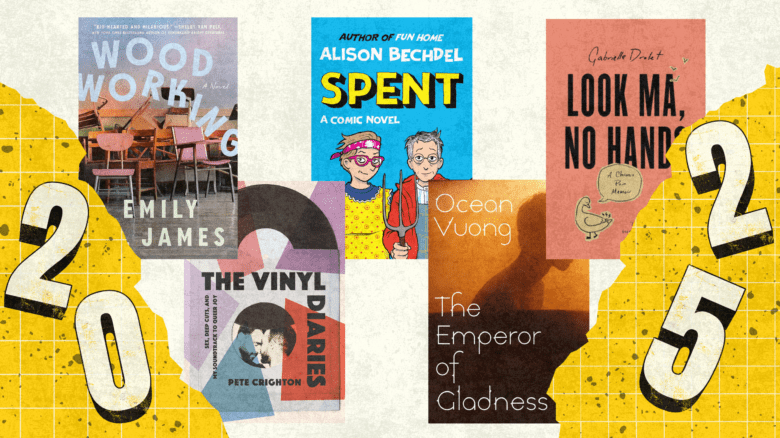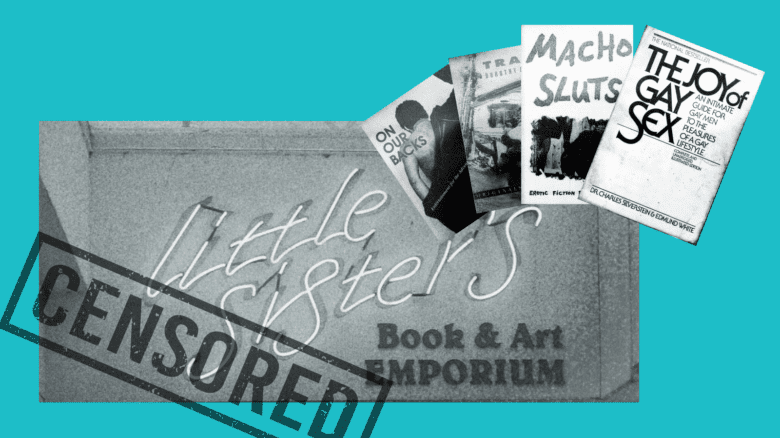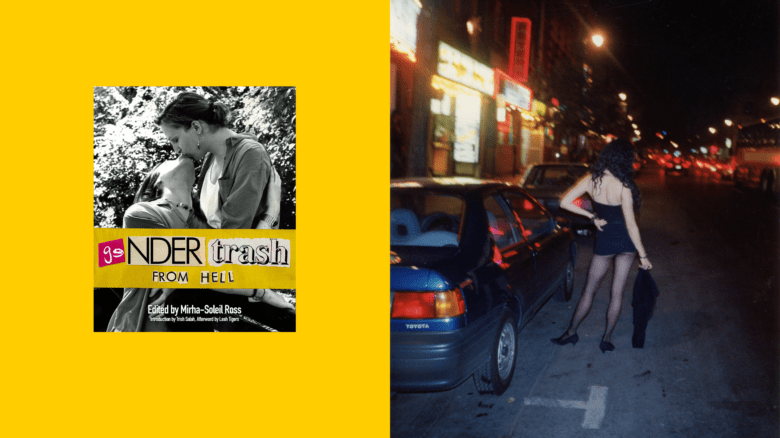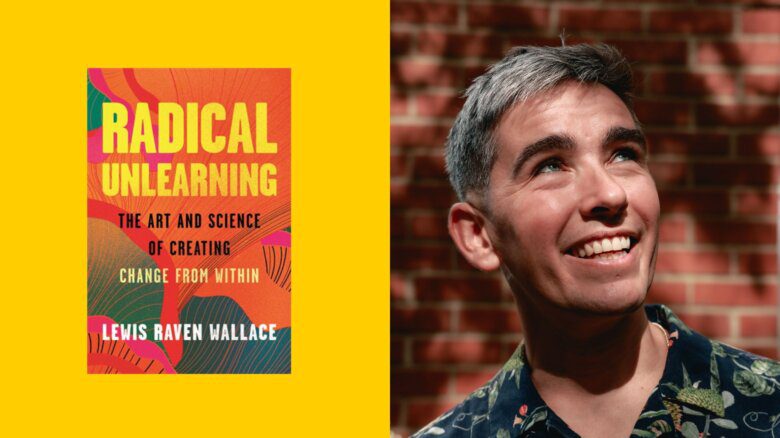Coming out as bi in my mid- and late 20s, I felt behind. My first same-sex crush, on Zoe Saldana as Gamora from Guardians of the Galaxy, completely blindsided me, as did the queer crushes that followed. After insisting for years that I was straight, I had no playbook for coming out to my friends and family—or to my long-term boyfriend. It was shameful to be as old as I was and still discovering (big) things about myself. I should’ve known sooner. I was foolish. I was completely alone.
That tirade played in my head for years. Luckily, I’ve since learned that none of it is true. Therapy helped. So did queer content, in the form of TV shows, movies and, of course, books.
Part of my shame stemmed from the fact that I hadn’t engaged with any queer content before that first crush. I’d called myself an ally for years, and had done my best to support my queer friends, but as an overworked grad student dealing with a sexuality crisis, I didn’t know where to start on my own self-acceptance journey. For the first two years, admitting I was bi was hard enough; committing to queer TV or books felt too visible and real. I needed to work through my internalized biphobia first.
Because of this, I didn’t know the variety of queer stories that existed. Reading these works of nonfiction, mostly memoirs, helped me understand that I wasn’t behind or late or alone.
The following five books helped normalize my experience of queerness. Though I read them mainly because they were available through my local library—and they’re all pretty recent titles—each one spoke to a different facet of my self-acceptance journey. On these frenzied library trips, I was looking to see myself in book-jacket copy.
A manual titled A Guide to Help Natalie would’ve been ideal, but short of that, I was on my own. I didn’t have a bi mentor who could’ve pointed me toward the existing queer canon. I was too scared to reach out. I had to reinvent the wheel, looking primarily for books by millennial or younger Gen-X writers, people who share many of my cultural influences. Many of these books made good use of humour to balance out heavier subject matter.
I also stuck with memoir. Though I love fiction, poetry and essays, I wanted to be with real people with experiences similar to mine. I wanted to feel less alone. Each of these books helped me understand the larger cultural context surrounding queerness and coming out. It’s a perspective that helped me accept myself—and then, eventually, write about my experiences to reach others struggling with the same self-hate.
1. The Times I Knew I Was Gay by Eleanor Crewes. Simon & Schuster, 2020
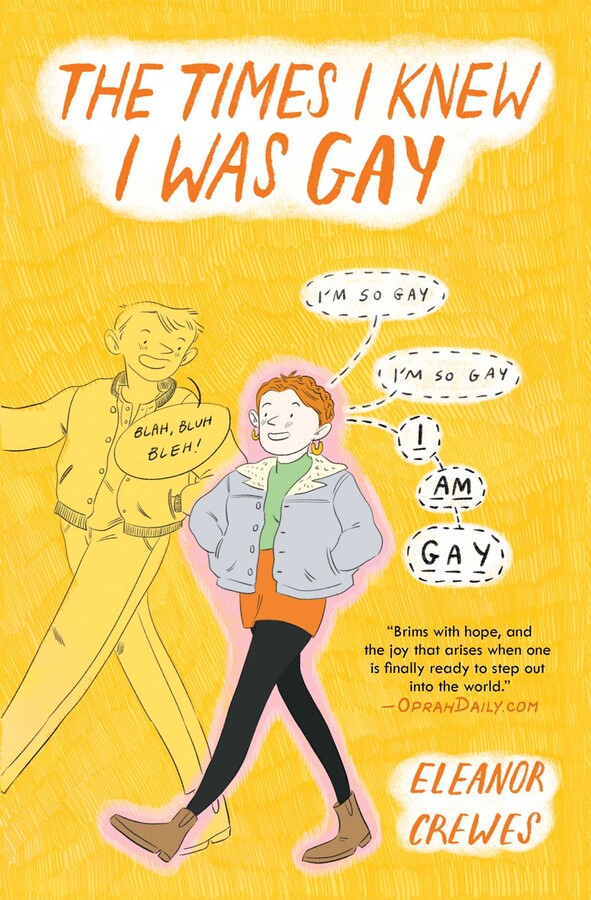
Growing up, I was an avid manga and comics fan. So it’s no surprise that, as an adult, I picked up a graphic memoir when purposefully looking for queer content. Set in urban London in the aughts and 2010s, Crewes details her coming out as a lesbian, and then her later retreat to the closet and second coming out, amidst heteronormative confusion. I was drawn immediately to her candid humour. But what sucker-punched me was the connection she drew between her sexuality and her dislike of her body: “My struggle with food was a subconscious way to redirect myself from the fact that I was gay. I created a problem to distract my body from my body …”
Crewes’s line—graphically displayed as a two-paragraph blurb centred on an otherwise black page—hit so close to home that I took a photo of it. I think about it often.
I didn’t distract myself with food, but with sports: Starting at age 13, I dedicated myself to tennis. I practised against a wall, rode my bike to the local park to play and attended tennis clinics. I played practice matches, worked out and cross-trained. Hyper-focusing on tennis meant I didn’t have to think about my peers and their burgeoning sexualities, or my body or the ways my body—and desires—were changing as I aged.
2. Would You Rather? by Katie Heaney. Penguin Random House, 2018
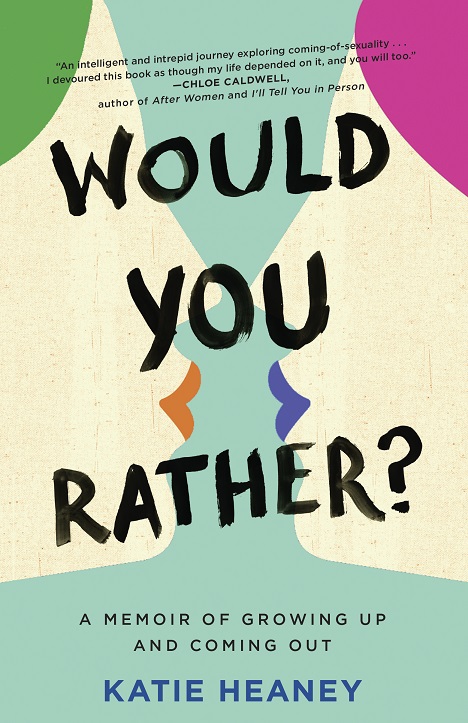
Though I realized I was queer at age 25, I didn’t come out until 28—just like Heaney, who also struggled with the “lateness” of her sexuality. In Would You Rather? Heaney grapples with adulthood and her burgeoning feelings for women. This followed her first memoir, Never Have I Ever, a book about her struggle to find the right (male) partner. Our assumed straightness, coupled with our coming out in our late 20s and our careers as writers and journalists, eased some of my anxiety about being behind and alone.
One of my favourite parts of Heaney’s memoir is about labels. Though she struggles with them throughout, this particular section focuses on how she isn’t sure what to call herself now that she’s dating a woman. She doesn’t want to make a big coming-out post on social media only to correct it later if her label changes. Because she had touted her straightness in her first memoir, she feels a pressure to be accurate, precise and public. This tension leaves Heaney afraid to call herself anything “for fear of making [herself] inaccurate”—again.
It was something I struggled with, too. I’d liked women and men, so that made me bi, but I’d liked so few people of any gender; did that make me demi or ace instead? Though I hadn’t had a crush on a non-binary person, I felt pretty certain that I would if I met the right person, so maybe that made me pan and not bi.
Maybe, picking up on Heaney’s approach, I’d be safer not labelling myself publicly until I was a little more certain. Though Heaney did eventually post a photo of her and her girlfriend on social media, along with a coming-out caption, her misgivings about these posts gave me permission to skip them in my own life. I don’t have to do anything.
More important, though, Heaney’s memoir helped me appreciate that sexuality can be complicated and messy—and that that messiness doesn’t make me any less queer.
3. The 2000s Made Me Gay: Essays on Pop Culture by Grace Perry. Macmillan, 2021
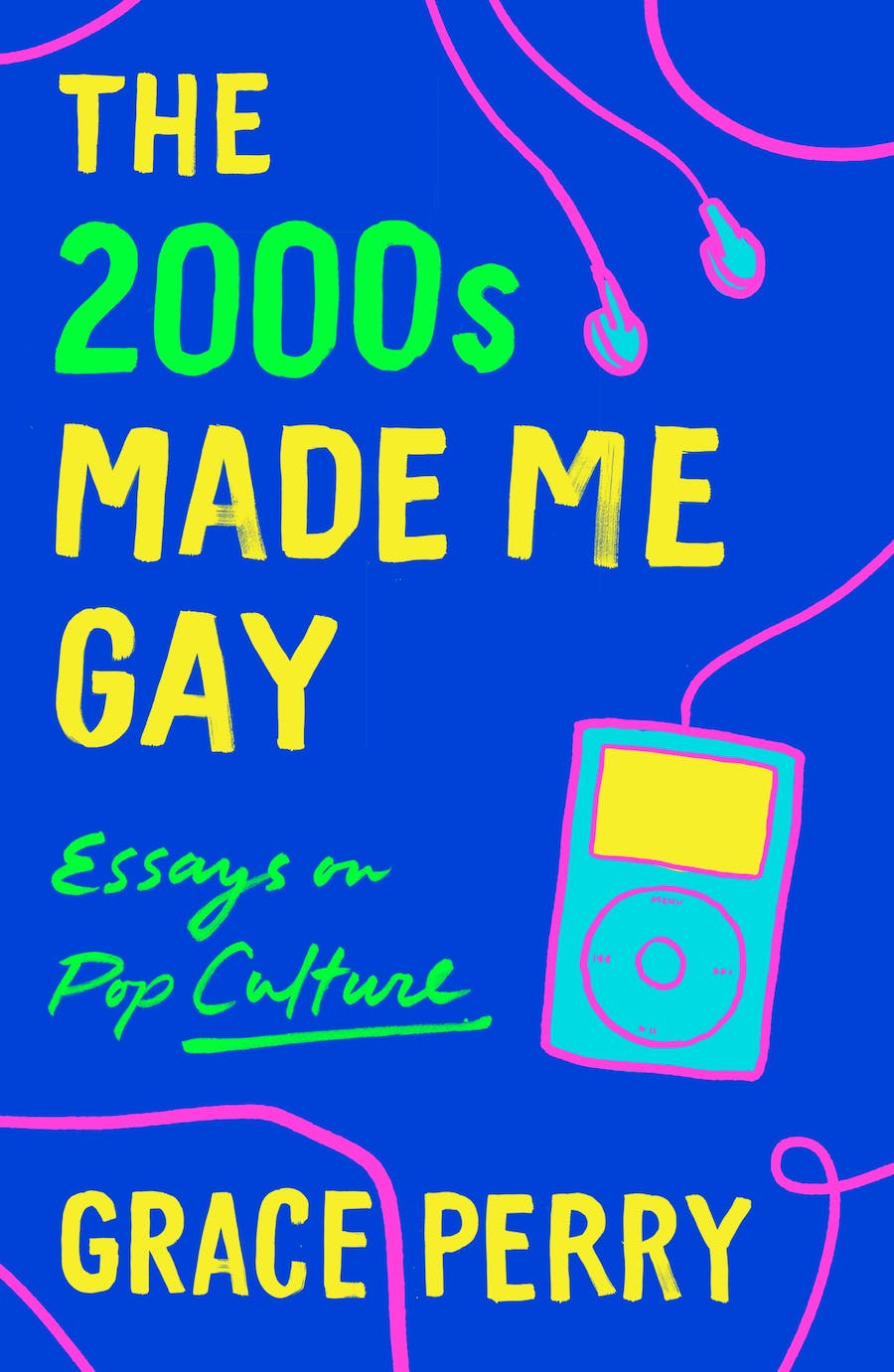
A Lambda Literary Award finalist, Perry’s essay collection navigates aughts pop culture alongside Perry’s own coming-out story from her childhood in Illinois, through her college years in Massachusetts and abroad, with a focus on the media she consumed during that time. This title skews more research-heavy than the other books on this list. It also specifically focused on the dearth of queer representation in the aughts, which left me wondering how much of my own confusion stemmed from a lack of representation, and mentors, in my adolescence.
So many lines of Perry’s resonated with me—helped, I’m sure, by the fact that she’s only a few years older than me, so we grew up on much of the same media. Katy Perry’s “I Kissed a Girl,” the TV show Glee and Taylor Swift’s 2008 album Fearless are just a few; though, like Grace Perry, I wouldn’t understand their connection to my perception of sexuality for years.
One of my favourite lines comes from the essay “Banter Boys,” where Perry writes about attraction, and the myriad ways that people experience it: romantic, sexual, aesthetic, etc. What she calls a “familiar question” was all-too-familiar for me: “Do I want to be this person, or do I want to fuck this person?”
Perry suggests that this question is especially complicated for queer folks, who may be noticing queer attraction for the first time, and therefore may not acknowledge romantic or sexual attraction for what it is. She writes of her love of the 2001 film Moulin Rouge!, “And yet I now see that even in [my own] red dress, I didn’t want to be Satine…. No, I just had a throbbing crush on Nicole Kidman.”
Though those lines aren’t particularly funny, I laughed out loud reading them. My own crush on Gamora began the same way. Admiration, I’d called it. Kinship. It took a few months for the full truth to crystalize. Perry’s mix of her own personal story, with both pop culture and research on appropriate subjects, helped me get out of my own head and see the larger context in which Perry’s life—and my own—occurred. It anchored me to a wider perspective that I desperately needed as I began to read queer content for the first time.
4. Tomboyland by Melissa Faliveno. Topple Books, 2020
The book jacket description for Faliveno’s essay collection opens with the line, “Sometimes there is no one word for who we are.” I checked it out from the library without reading the rest.
The rest, as I’d find out, explored Faliveno’s perceptions of sexuality and gender as she grew up in the American Midwest and later moved to New York City. It vacillates between tornadoes and kink parties, between motherhood and sports.
As a former competitive athlete, the essay “Switch Hitter” really hit home for me (pun very much intended). Faliveno, who played softball, didn’t make her college team—just like me. She almost had an inappropriate relationship with a coach, though nothing came of it—just like me. She, too, had to figure out who she was going to be in the absence of the sport that had once consumed her life. No single essay had paralleled my late adolescence so closely. It left me feeling completely and fully seen.
Though I would’ve loved that essay whether or not Faliveno was queer, I’d be remiss if I didn’t mention the complicated ways that her collection addresses and studies her struggles to feel fully comfortable in her body and sexuality. In the essay “Tomboy,” Faliveno writes about being a bi woman currently dating a man (again, just like me). “When I meet new people, queer or straight, I carry this anxiety with me—that as soon as I reveal I’m in a relationship with a man, I will be questioned or invalidated or both.”
Though I know bisexuality is valid, regardless of what other people think, like Faliveno, I was—and am—scared of that invalidation. It’s something that bi folks face all too often, and Faliveno discusses the times she’s received it both from the queer community and from her straight friends. Like Perry’s work, Faliveno’s essays helped me understand the larger context in which bisexuality exists. Knowing that invalidation occurs across genders and sexualities doesn’t make it hurt any less, but it does help me formulate responses for when it happens. That gives me the courage to interact with the larger world, a courage I didn’t have before I began to read queer content.
5. High-Risk Homosexual by Edgar Gomez. Soft Skull Press, 2022
Last but certainly not least, Gomez’s essay collection explores his coming out as a gay man in Florida in the aughts and 2010s, with a focus on his learning to accept himself. Both provocative and darkly funny, he explores shame, pride and longing against the larger cultural backdrop of queerness and his Latinx roots.
The essay “Boys Club” is about Gomez’s first trip to Club Orlando, a men’s bathhouse. He wants to belong there, even as he’s afraid of being seen, both entering the establishment and once inside. He struggles to own up to this desire within himself and with others: He tells friends that he’s going to the bathhouse as research. To make fun of it. He calls it “an assignment” and “a case,” as though someone else has dictated his going there, which makes his presence somehow okay.
Gomez’s desire to belong was so raw and honest that it transcended some of the differences in our lived experiences and had me looking at my own longings—specifically my desperation to belong to the larger queer community.
Toward the end of the essay, Gomez writes, “As much as I wished I could shed all my shame in one night, I was still too afraid of Club O, of what it would mean for me to feel at home at a place designed for quick sex. It was easier to tell myself I wanted what wasn’t being offered there [i.e., dating], because as long as I pined for something else, what was actually within my grasp couldn’t frighten me.”
I wouldn’t have expected to see aspects of my experience in an essay about men’s bathhouses. Yet Gomez’s shame and fear brought back my memories of high school, and how I’d focused so narrowly on tennis—my “something else.”
Gomez builds on his sense of unease in later essays like “Everything Is Sexy!,” in which his friend Arturo talks Gomez into joining the burlesque troupe Polylust. Gomez spends much of the essay trying to decide what sexy means to him, in the aftermath of his pretending to be a Latinx stereotype for an ex, during his troupe audition and in the lead-up to his first performance. His final takeaway is that sexiness is something he has to claim for himself. After their performance, dancing gleefully with his friends, Gomez wonders if the others, like him, “found a place in their minds where it was okay to be sexy, where they were safe, and they carried it with them.”
Self-acceptance, for Gomez, doesn’t come in one sitting. Neither does self-love. It’s a complicated process with which he grapples throughout his memoir, but these moments of hope and happiness glimmer, for me. They give me hope that I too can find my place, one day.
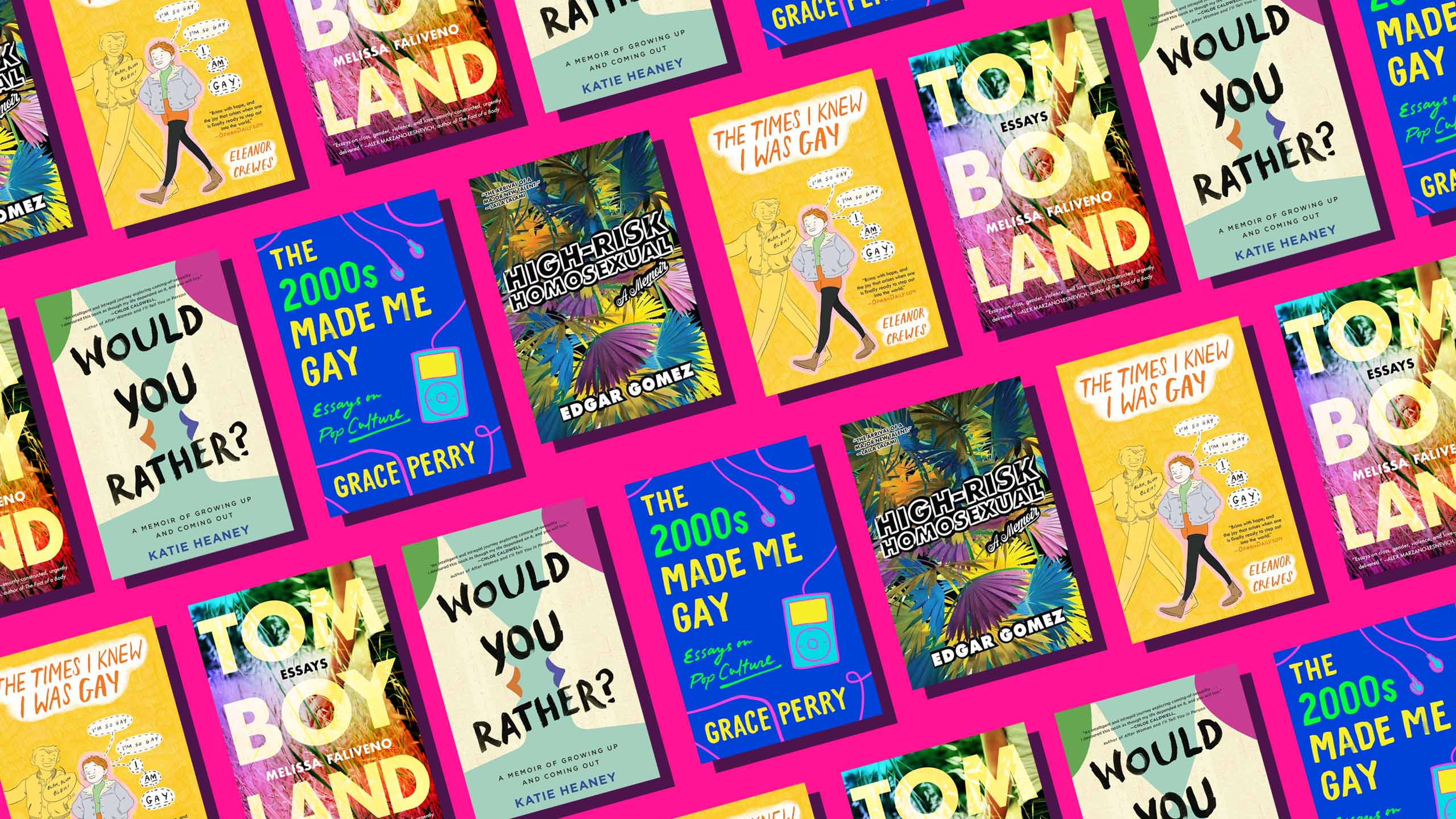

 Why you can trust Xtra
Why you can trust Xtra